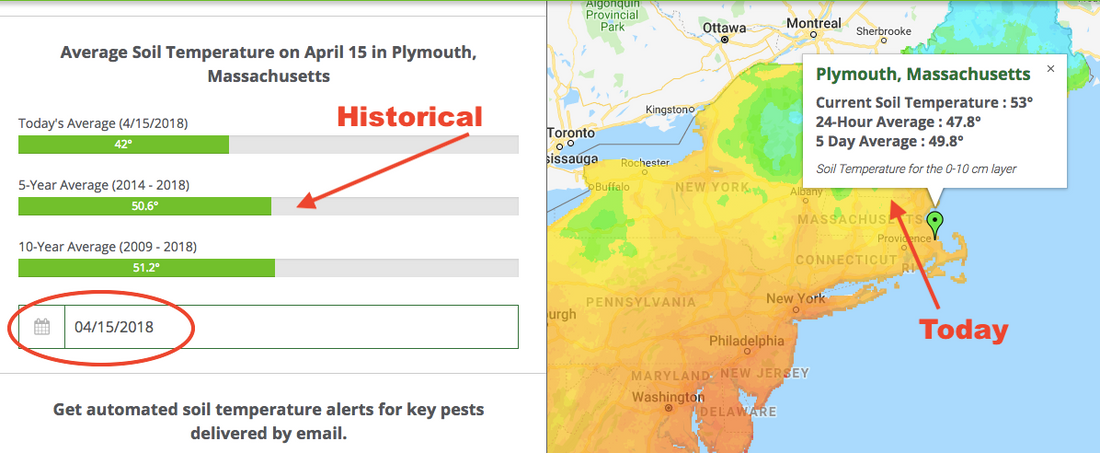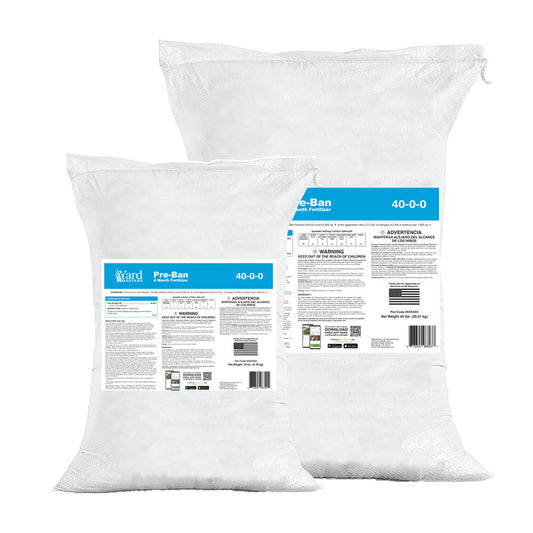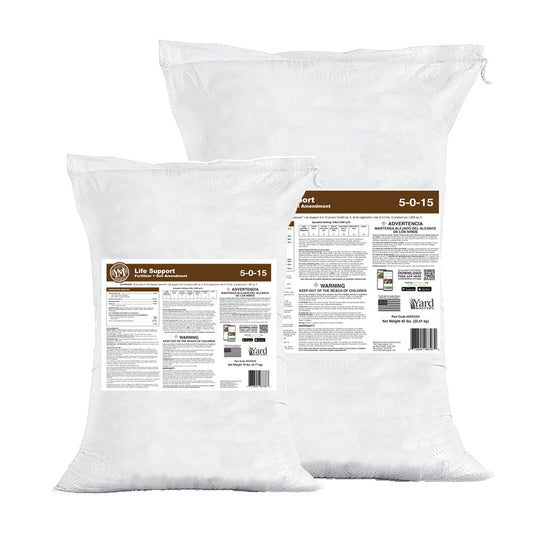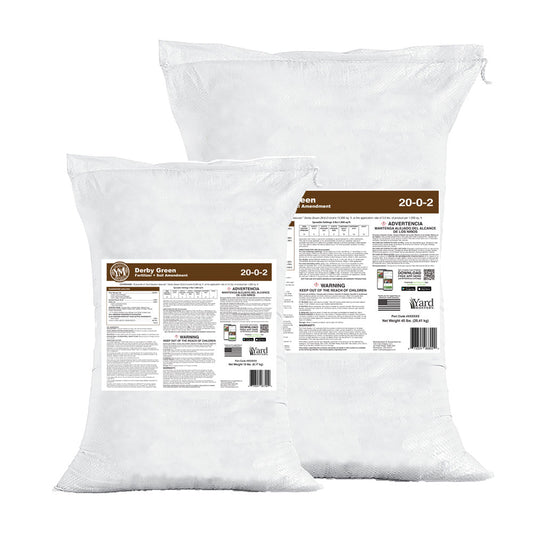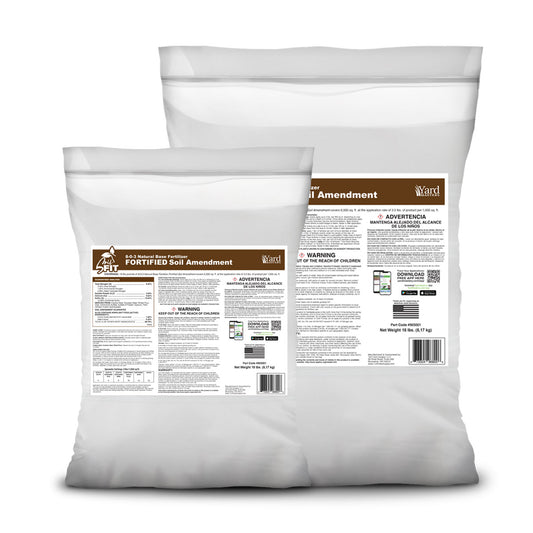Lawn Flags For You Or Your Friends
We have released some fun lawn marking flags branded for us with our Lawn Care Nut humor injected, sometimes subtly, other times straight up “in your face.”
These flags are inspired by the ones professional applicators leave in the lawn after they spray. I figured we should be able to “mark our territory” too - and these flags are perfect for showing everyone that they’ve been dominated. Check them out here.

Now, let’s get onto some questions I’ve been getting this week, specifically around dormant or winter lawn seeding.
Cool Season Grass Types
Late Fall Dormant Lawn Seeding
You guys just want to Throw Down, I get it. And since the lawn has pretty much stopped growing you feel like maybe, just maybe you can get ahead on next year by throwing down seed just before winter hits. Logical right?
What Is Dormant Lawn Seeding?
Dormant seeding is the practice of throwing down seed in the lawn in late late fall, or anytime during winter. Mostly recommended for severely bare areas, you get the seed-to-soil contact prior to the ground freezing, then snow comes and gives it a nice insulating blanket for winter.
The idea being:
You throw down seed during times when it’s too cold for it to germinate (scratch it in); it beds down and lay dormant over winter and come spring, all the melting snow coupled with warming temperatures will have it growing like crazy even before the red bud and magnolia trees wake up. But...
You avid readers will know that I don’t mention dormant seeding anywhere in my videos. That’s because it’s somewhat of a specialized strategy rather than an “I’m starting late, can I dormant seed and fix everything?” strategy.
Let’s look at dormant seeding in light of what I typically recommend as a course of action. Here are some general considerations.
1. Cool season grass seeds (KBG, Perennial Rye, Fescue) need soil temperatures above 50 and ideally closer to 60 degrees in order germinate. Keep in mind, these are soil temps. In spring, soil temps begin to rise as days get longer and the weather turns warmer. But consider this:
1. Very soon after germination grass plants are vulnerable to extreme heat but also extreme cold (freeze) and this can kill them. If you seed in late fall/winter, and your grass germinates in early spring, what lies ahead?
2. How often do you get a freeze overnight in later spring where you live? There is a reason lots of folks wait until May to plant summer annual flowers too - for fear of overnight freeze.
2. Crabgrass seeds (which are also in your soil) need soil temperatures above 50-55F to germinate too. So right about the time your winter overseeding is starting to take off in early spring, crabgrass seeds are growing right alongside it, taunting it, competing with it. I don't like that idea one bit.
3. My perfect strategy for pre-emergent herbicides to prevent crabgrass starts with an early application right when the forsythia bloom, followed by another right around the Kentucky Derby. (varies depending on where you live). If you have a dormant seeding you performed the year before, this strategy is out.
As you are seeing, we are going to start talking about weather windows again. Pretty much everything we do has to be considered within a window of time and what seasons/weather conditions we will face during that window and how those will affect the outcome we are trying to achieve. We also have to consider the ramifications of our actions further out beyond the window. Let’s keep digging.
CrabGrass VS Desired Grass
As the astute among you are noticing, crabgrass seeds and KBG/Rye/Fescue seeds like the very same conditions for germination. Granted, your grass seed you threw down is probably sitting within the top 1” of soil, even if you scratched it in real good. The crabgrass seeds may be a little deeper, but not that much. As springs usually go, you’ll be lucky if your grass seed gets a 10-day head start on the crabgrass. Chances are though, they will be germinating right alongside each other, albeit at different speeds and with different end goals in mind.
Since you are going to listen to me on this one, and NOT take chances with crabgrass, you are now asking “Allyn, is it possible to get down a late crabgrass pre-emergent so your seed has enough time to grow?
Answer: Maybe.
First off, you should seed with Perennial Rye or Fescue. These germinate much faster than KBG. I did a similar seeding workup with math and weather windows a few weeks ago. Check that out here for more information on Perennial Rye seeding and the weather window.
Perennial Rye germinates in about 7 days. So that means it should be off to the races when your soil temps hit 50 degrees. But when does that happen? Below is a screenshot from the Greencast Tool, and I picked my friends in Plymouth, MA as my geographic example this week. Let’s take a look.

(you can change the tool to your own city/zip code, I’m using Plymouth, MA as our example because it’s a town I love to visit)
As you can see, the soil temperatures are just cracking 50 degrees around April 15 each year. If you add 7 days for germination, and 14 days to become mature enough to be mowed that puts you at May 6 which is pretty much Derby Day, the end of your window for pre-emergent.
Of course, there are all kinds of things that can happen in spring that can push this strategy later, make it start earlier, or even shorten the window completely. Like anything, there is a give and take and dormant seeding, in my opinion, seems to require you to take a lot of luck from Mother Nature to make it work. In other words, a lot of things are totally out of your control. Then again, seed is cheap, so thrower down right? If you have some leftover that is just going to get wet and freeze in your garage, may as well throw down, scratch it in, and hope for the best!
Don’t forget, lawn flags available now, I hope you like them!

That's all for this week.
I'll see YOU in the lawn!
AL



